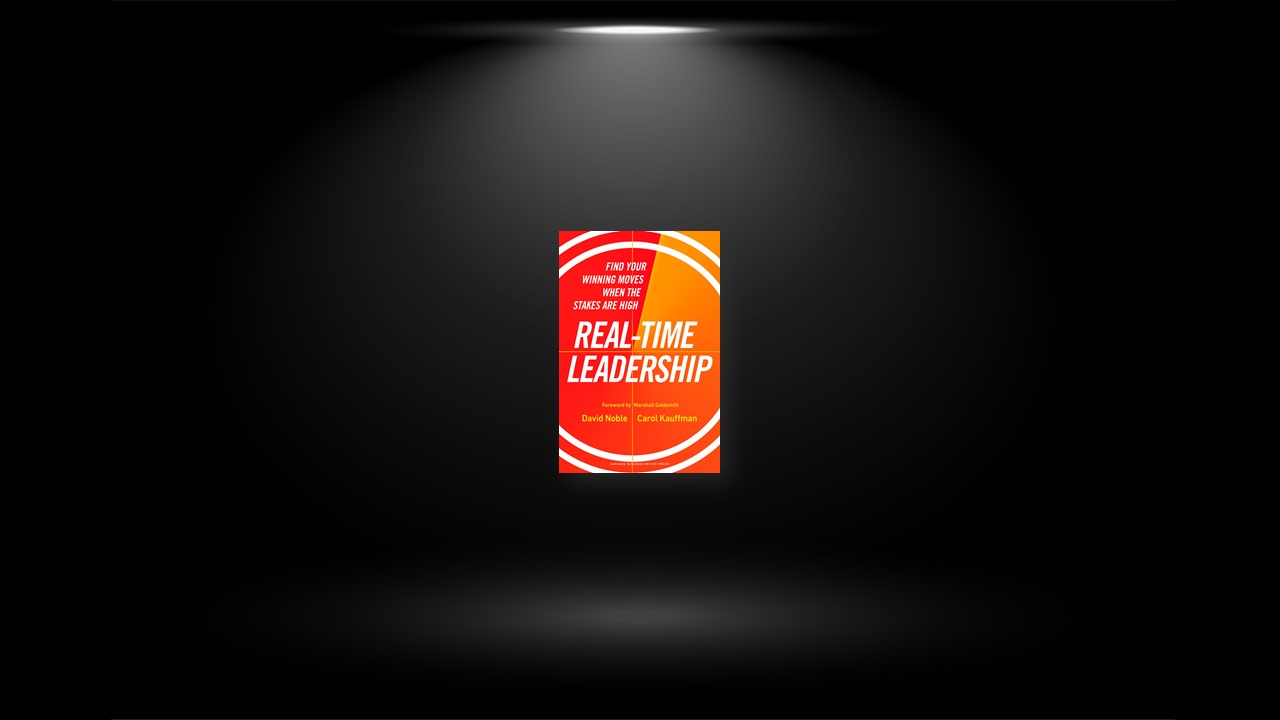How to MOVE
When facing your highest-stakes, highest-risk leadership challenges, draw on the MOVE framework in real time to help you make the space you need to succeed.
M Is about Being Mindfully Alert
Remember first that leadership always has three inextricably linked dimensions: the external goals, the internal qualities needed to meet those goals, and the interpersonal challenges of connecting strongly with all your stakeholders and empowering your team.
To be mindfully alert, answer questions that map to your Three Dimensions of Leadership: • External goals: What does a win look like for the goal you want to achieve? • Internal qualities: Are you being the person you want and need to be, in real time? What inner qualities and character strengths need to be developed for you to be an optimal leader in real time? • Interpersonal challenges: Are you leading in the way others need you to? How can you best relate to others to accomplish your goals?
O Is about Generating Options
For any type of challenge, whether it’s external, internal, or interpersonal, you can step into one of the Four Stances. These show you four different ways to win. You will come up with different options for winning by using one of the Four Stances:
Lean in: Take an active stance on resolving an issue. Lean back: Take an analytical stance to observe, collect, and understand the data. Lean with: Take a collaborative stance with others, focusing on caring and connecting to create an optimal culture. Don’t lean: Be still, discipline yourself to be receptive, and take in all that is around and within you so that creative wisdom can surface.
V Is about Validating Your Vantage Point
You have your default ways of seeing reality, but you’re not always correct. First double-check to see if you are seeing reality for what it is, not what you want or hope it to be or what you fear it can be. Be aware of your tendencies. Do you tend to look at things from high up or close up? Vantage Point excellence is when you can see the world from others’ points of view as well as your own.
E Is about Engaging and Effecting Change
Start by creating your Leader’s Intent. This is your vision and understanding of your top priorities and why they matter (drawing from M), possible high-level ways forward (leveraging O), and milestones along the way to know you’re winning (V).
Refine or revise your subsequent leadership signals. Be highly aware of how your Leader’s Intent is interpreted by others, and what you learn about how conditions are changing.
How to Use MOVE
MOVE is applicable to immediate challenges as well as longer-term challenges that you need to tackle in real time as they unfold. The framework takes some practice to master, but it can be helpful to you right now. Try it on an important leadership issue you are dealing with. Either scan through the entire framework, or if you feel one or two elements matter most in your situation, focus on those.
Change Your Vantage Point
When you step into a big new role, your first task is to be aware that your Vantage Point must change. Step back and take another look at your priorities, operating environment, and new relationships. Expand your Vantage Point to see more and see further.
- Get the right clarity in your Vantage Point. Your relationships and interpersonal challenges, the third dimension of leadership, shift significantly with a new role. Even well-established connections are impacted by new dynamics, and you need to test your assumptions. Look up, sideways, and below to start to understand all of the new players in your role. Learn as much as you can about your new boss(ses). Former peers and friends may now report to you, and you must adjust how you interact to get the right Vantage Point. Cultivate relationships with new peers, too. This is the hardest to do but also the most important; good peer relationships are the strongest predictor of success in a big new role. Get to know your direct reports. Don’t let wishful thinking, or your fears, cloud your capacity to assess others.
- Get the right resolution in your Vantage Point. One of the most important reality checks is whether the mandate you believe you have been given is actually true. Do as much due diligence as you can before you take the job. Once you are in your new role, if you sense something is off, look more closely. Don’t be afraid to probe and test the limits of your mandate and to see if it is changing.
- Get the right scope in your Vantage Point. You are operating at a bigger scale and scope than ever before, which will require you to lead in a different way. This is less about doing the work yourself and more than ever about orchestrating the right conditions for others to be at their best.
- Get the right level in your Vantage Point. Now that you are higher up in the organization, you can see the bigger picture and the horizon is further out. Use this Vantage Point to think more strategically and less tactically, doing more long-term planning, and connecting beyond the organization. Sharpen your strategic perspective by looking at longer-term trends and using systems thinking to identify and assess new opportunities and threats.
Do What Only You Can Do
In a big new role, your external, internal, and interpersonal priorities and options (M and O) will change. You’ll experience new ones and need new strategies to generate them before you engage to effect change at scale (E). Here’s what to know:
- Classic accelerated integration programs that focus on the first few months in a big new role can help you get started, but you also need to develop longer-term plans (three years out) and generate many options for getting a ten-out-of-ten outcome on your three-year outlook. Work your way back from there to look at two-year and one-year outcomes as well. You should be thinking ahead more than you used to.
- Expect the following new dynamics in a big new job: – External priorities will shift suddenly, even when you have a solid Vantage Point. Be prepared to shift with them. – You will want to do too much too fast. Check your ambition, match your goals to your resources, and be aware of people’s ability and desire to take on the amount of change you’re introducing. – Your internal demands will increase, especially on your health. Focus on sleep, nutrition, exercise, counseling, and other physical and mental self-care to ensure you have the stamina to meet the demands of the job.
- Be mindfully alert that you are now an “enterprise entity” as well as a person. This means that: – You must identify with the whole organization, not just the parts you’re comfortable or familiar with. – You have new relationships with former peers who may now report to you, former bosses who may be peers, and new bosses whom you may not know. Get to know them all, and adjust your behavior to the relationship. Take special care with peer relationships, which will be most crucial to your success. – You live in a glass house and must behave in a way that is beyond reproach. What you say and what you do will be scrutinized and used. – The higher up you go, the greater the distortion in how people perceive you; they see you as more powerful than you see yourself. People will fill in their uncertainty about situations with their fears and wishes, whether that’s your intent or not. Invest in letting people get to know you as much as you can to break down these misconceptions. – It will be lonelier in the big new job. Find someone you can share private moments, wins, and laughs with. Sharing successes is crucial.
Shoot for the Moon
- The ambition of 10x leadership is aspirational. It involves focusing on what a 100 out of 10 (rather than a 10 out of 10) would look like for the success of your biggest, most ambitious long-term external goals.
- How to set 10x external priorities: – Take your external priority and look at the best possible long-term outcome. – Then expand your vision to come up with an even better outcome, something that is currently unimaginable to you, by tapping into new thinking from others. – Pick your 10x goal.
- How to set 10x internal and interpersonal priorities: – Recognize your 10x goal will require new internal priorities for yourself, such as working on your bravery, emotional self-regulation, and temptations to stray from integrity when things go wrong. – Continue to cultivate agility in the Four Stances as an interpersonal goal, since you will need your whole team’s buy-in and best effort to achieve 10x goals.
- Generating options is a team effort: – You first need to create the conditions for your team and organization to be creative and innovative by assessing your organization’s capacity to innovate and tuning the most important drivers of innovation as appropriate. Concentrate initially on a small number of changes that can create disproportionately positive results. – Accompany your leaders on an exponential thinking exercise, translating possibilities into opportunities for new products and services, customer experiences, or business models.


